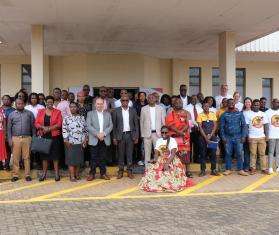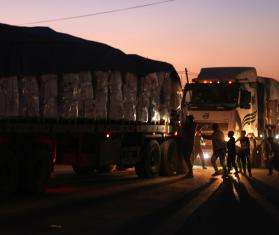In Manila and in the North of the Philippines, MSF teams continue to assist the most vulnerable people affected by Tropical Storm Ketsana and Typhoon Parma, which struck the country on September 26 and October 3, affecting over 8.4 million and causing 849 deaths.
In Manila and in the North of the Philippines, Doctors Without Borders/Médecins Sans Frontières (MSF) teams continue to assist the most vulnerable people affected by Tropical Storm Ketsana and Typhoon Parma, which struck the country on September 26 and October 3, affecting more than 8.4 million and causing 849 deaths.
In Manila and surrounding areas, tens of thousands of people are living in crowded evacuation centers or partially flooded houses. In the slums near a canal east of Manila and in all affected areas of Laguna Bay, MSF has been running mobile primary health care clinics with referrals to local hospitals.
“The most frequent diseases we see are respiratory and skin infections, as well as diarrhea cases,” says MSF emergency coordinator Pierre Luigi Testa. “Some of our teams also assist the department of health with the national vaccination campaign for measles, and ensure tetanus vaccines are provided to those in need.”
MSF has conducted more than 2,220 consultations since the beginning of the emergency and offers mental health support to flood victims when needed.
Disease control in evacuation centers
In the crowded evacuation centers, MSF has set up 50 latrines, while in the flooded areas where people are staying in makeshift houses, MSF runs disposal activities to reduce the risk of contamination, as most latrines remain under water. MSF has also provided sanitation kits with chlorine and brushes to improve hygiene in some of the evacuation centers.
In neighborhoods around Laguna Bay, MSF is supporting the control and surveillance of diarrheal illnesses and leptospirosis, a bacterial infection caused by exposure to floodwaters contaminated with animal urine.
MSF also supports the department of health in the treatment of patients, sanitation activities, and health promotion in communities in the areas where there has been an increase in diarrhea. Teams will also provide 13 water tanks to ensure safe stocks of water.
More than 15,000 families have received hygiene kits from MSF in Manila and surrounding areas. These include soap and toothbrushes, as well as cooking utensils and blankets. Materials to build shelters were also distributed in some of the places where people had lost their houses.
Interventions in other areas
Meanwhile MSF teams have intervened in Ilocos Norte, Cagayan, Pangasinan, and Tarlac provinces on the northern island of Luzon, where Typhoon Parma wreaked havoc after weeks of continuous, heavy rain.
In Pangasinan and Tarlac provinces, dozens of cities and communities where flooded after authorities released water from local dams to prevent them from overflowing after the typhoon’s torrential rain.
MSF has conducted over 1,930 medical consultations and distributed 6,700 hygiene kits, as well as 520 construction kits where houses had been damaged or destroyed. Another 6,000 hygiene kits and 600 construction kits should be distributed next week.
MSF’s water and sanitation team have begun the construction of 40 latrines for displaced families in Rosales, Pangasinan province.
Following an assessment in Benguet province, MSF is also planning to provide construction kits where communities were devastated by severe mudslides after weeks of heavy rain.
After hitting the Philippines, tropical storm Ketsana also struck Vietnam, killing dozens and flooding populated areas. MSF sent a nurse and a logistician to assess the needs of victims in Da Nang, Hoi An, Quang Ngai, and Kontum in central Vietnam. As a number of other organizations are responding, MSF has chosen not to begin an emergency intervention in these areas.



